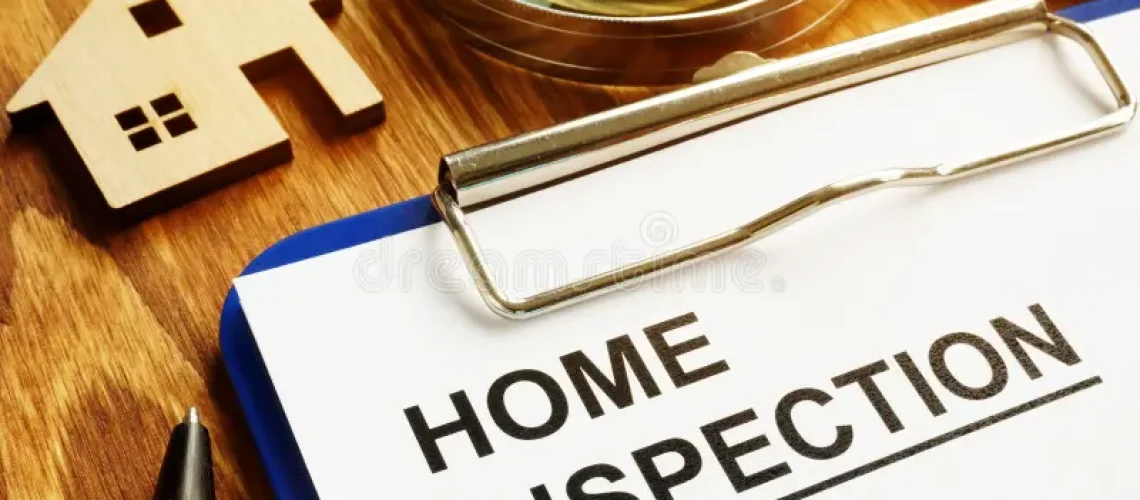Buying a home is a significant milestone in life, and it often comes with a mix of excitement and anxiety. To ensure that your dream home doesn’t turn into a nightmare of unexpected repairs and issues, a crucial step in the home-buying process is a thorough home inspection. In this article, we’ll delve into the intricacies of what a home inspection includes, why it’s essential, and how it can be your safeguard in making an informed decision.
Understanding the Basics
What is a Home Inspection?
A home inspection is a visual examination of a property’s structure, systems, and components. Conducted by a licensed and certified home inspector, the process aims to provide the potential buyer with a detailed and unbiased assessment of the home’s condition. The inspector evaluates various aspects of the property, helping the buyer understand the potential costs and issues associated with the purchase.
When Should a Home Inspection Occur?
Typically, a home inspection occurs after the buyer and seller have reached a purchase agreement but before the deal is finalized. This timing allows the buyer to identify any problems with the property and negotiate repairs or adjustments to the sale price before committing to the purchase.
The Components of a Home Inspection
1. Exterior Inspection:
- Roof: The inspector will examine the roof’s age, condition, and any signs of damage or leaks. They may also check the gutters, downspouts, and the presence of moss or algae.
- Siding and Trim: The exterior walls, siding, and trim are inspected for any damage, rot, or signs of pests.
- Windows and Doors: The inspector checks for proper installation, seals, and signs of water intrusion around windows and doors.
2. Structural Components:
- Foundation: This involves assessing the foundation for cracks, shifts, or other issues that may affect the structural integrity of the home.
- Basement and Crawlspace: The inspector will examine these areas for signs of water intrusion, mold, and proper ventilation.
3. Interior Inspection:
- Walls and Ceilings: Any visible cracks, water stains, or other issues with the walls and ceilings are noted.
- Floors: The inspector will check for sagging, unevenness, or damage to the floors.
- Windows and Doors: Interior windows and doors are inspected for proper operation and any signs of issues.
4. Roofing Inspection:
- Roof Covering: The inspector assesses the condition of the roof covering materials, such as shingles or tiles.
- Flashings: This includes inspecting the metal pieces used to prevent water from penetrating joints and seams.
- Chimneys and Vents: The inspector examines chimneys and vents for stability and signs of damage.
5. Plumbing System:
- Water Supply: The inspector checks the water supply system, including pipes, water pressure, and the functionality of faucets.
- Drainage: The drainage system is inspected for leaks, proper flow, and signs of water damage.
- Water Heater: The inspector assesses the water heater’s age, condition, and safety features.
6. Electrical System:
- Wiring: The inspector examines the electrical wiring for safety and compliance with building codes.
- Outlets and Switches: All outlets, switches, and fixtures are tested for proper operation.
- Service Panel: The electrical panel is inspected for capacity, safety, and any signs of wear or damage.
7. Heating, Ventilation, and Air Conditioning (HVAC) System:
- Furnace and Heating System: The inspector checks the heating system for efficiency, proper function, and signs of wear.
- Air Conditioning: The air conditioning unit is inspected for cooling efficiency and any necessary repairs.
- Ventilation: The overall ventilation system is evaluated for proper airflow and functionality.
8. Appliances:
- Kitchen Appliances: The inspector tests the functionality of kitchen appliances, such as the stove, oven, and dishwasher.
- Laundry Appliances: Washer and dryer functionality and connections are inspected.
9. Attic and Insulation:
- Insulation: The inspector assesses the quality and quantity of insulation in the attic.
- Ventilation: Proper attic ventilation is crucial, and the inspector will check for vents and signs of moisture.
10. Site Inspection:
- Property: The inspector looks at other hazards that may exist around the property, including trees overhanging the property, sidewalks, and driveways.
- Site Selection: Proper building sites include land that slopes away from the foundation of the property and allows for drainage of rainwater to prevent flooding.
The Importance of Home Inspection
Uncovering Hidden Issues
One of the primary benefits of a home inspection is the ability to uncover hidden issues that may not be apparent during a casual walkthrough. From a leaking roof to faulty wiring, an inspector’s trained eye can catch potential problems that might lead to costly repairs down the road.
Negotiating Power
Armed with the information from a home inspection, buyers have the opportunity to negotiate with the seller. If significant issues are uncovered, buyers can request repairs, replacements, or a reduction in the sale price to account for the necessary fixes.
Budgeting for Repairs
Understanding the condition of the home allows buyers to budget for future repairs and maintenance. This realistic approach to homeownership helps prevent financial surprises and ensures that the buyer is well-prepared for the responsibilities that come with owning a property.
Making Informed Decisions
Ultimately, a home inspection empowers the buyer to make an informed decision about whether to proceed with the purchase. It provides a comprehensive overview of the home’s condition, allowing the buyer to weigh the pros and cons before committing to such a significant investment.
Finding the Right Home Inspector
Credentials and Qualifications
Not all home inspectors are created equal, so it’s crucial to find a qualified and reputable professional. Look for inspectors who are licensed, certified, and members of recognized industry associations. These credentials ensure that the inspector has received the necessary training and follows ethical standards.
Experience and Track Record
Experience matters in the world of home inspection. An inspector with a proven track record is more likely to identify issues accurately and provide valuable insights. Consider reading reviews, asking for recommendations, and checking the inspector’s history in the field.
Thoroughness and Attention to Detail
A good home inspector is thorough and pays attention to detail. They should take the time to inspect every nook and cranny of the property, leaving no stone unturned. A detailed and comprehensive report is crucial for the buyer’s understanding and negotiation process.
Communication Skills
Effective communication is key in any profession, and home inspection is no exception. A good inspector should be able to explain complex issues in simple terms, answer questions patiently, and provide clear and concise reports.
The Home Inspection Process
1. Scheduling the Inspection:
- Once a purchase agreement is in place, the buyer or their real estate agent typically schedules the home inspection. Coordination with the seller is essential to ensure access to the property.
2. The Inspection Day:
- On the scheduled day, the inspector conducts a thorough examination of the property, often taking several hours depending on the size and complexity of the home.
3. Accompanying the Inspector:
- While not mandatory, buyers are encouraged to accompany the inspector during the process. This allows them to ask questions, gain a better understanding of the property, and receive immediate feedback on any concerns.
4. The Inspection Report:
- Following the inspection, the home inspector provides a detailed report outlining their findings. This report typically includes descriptions of any issues, recommendations for repairs, and sometimes photographs for clarity.
5. Reviewing the Report:
- Buyers should carefully review the inspection report. If there are major concerns or necessary repairs, they can discuss these issues with their real estate agent to determine the best course of action.
Common Issues Uncovered During Home Inspections
1. Roofing Problems:
- Leaks, missing or damaged shingles, and the overall condition of the roof are common issues.
2. Electrical Wiring Issues:
- Outdated wiring, overloaded circuits, and faulty electrical panels are frequently identified.
3. Plumbing Concerns:
- Leaks, inadequate water pressure, and outdated plumbing systems are common findings.
4. Foundation and Structural Issues:
- Cracks in the foundation, sagging floors, and structural instability can be serious concerns.
5. HVAC System Problems:
- Inefficient heating or cooling systems, lack of proper ventilation, and outdated equipment are common issues.
6. Mold and Moisture:
- The presence of mold, mildew, or signs of water damage can have health implications and may require remediation.
Conclusion
In the complex process of buying a home, a thorough inspection is a crucial step that should not be overlooked. From the foundation to the roof, and everything in between, a qualified home inspector assesses the property’s condition, providing valuable insights that empower buyers to make informed decisions. By understanding the components of a home inspection, the importance of the process, and how to find the right inspector, prospective homebuyers can navigate the real estate market with confidence, ensuring that their dream home doesn’t become a costly nightmare.


